Getting started with R and RStudio
Mikhail Dozmorov
Virginia Commonwealth University
09-22-2020
R history
Elegant, object-oriented programming language.
- Started by Robert Gentleman and Ross Ihaka (hence
R) in 1995 as a free, independent, open-source implementation of theSprogramming language - Currently, maintained by the R Core development team
- Started by Robert Gentleman and Ross Ihaka (hence
An extremely powerful language for statistical modeling, machine learning, data manipulation, and visualization.
- Efficient data analysis
- Optimized operations on vectors, matrices lists
- Very sophisticated graphs and data displays

More R history
- 1992: R development begins as a research project in Auckland, NZ by Robert Gentleman and Ross Ihaka
- 1993: First binary versions of R published at Statlib
- 1995: R first distributed as open-source software, under GPL2 license
- 1997: R core group formed
- 1997: CRAN founded (by Kurt Jornik and Fritz Leisch)
- 1999: The R website, r-project.org, founded
- 1999: First in-person meeting of R Core team, at inaugural Directions in Statistical Computing conference, Vienna
- 2000: R 1.0.0 released (February 29)
- 2000: John Chambers, recipient of the 1998 ACM Software Systems Award for the S language, joins R Core
- 2001: R News founded (later to become the R Journal)
- 2003: R Foundation founded
- 2004: First UseR! conference (in Vienna)
- 2004: R 2.0.0 released
- 2009: First edition of the R Journal
- 2013: R 3.0.0 released
- 2015: R Consortium founded, with R Foundation participation
- 2016: New R logo adopted
- 2020: R 4.0.0 released
https://blog.revolutionanalytics.com/2017/10/updated-history-of-r.html
Organizations behind R
The R project, https://www.r-project.org/
- R source code contributors: https://www.r-project.org/contributors.html
Comprehensive R Archive Network (CRAN), https://cran.r-project.org/
- Download and install R
RStudio, https://www.rstudio.com/
- Download RStudio: https://www.rstudio.com/products/rstudio/#Desktop
Bioconductor, https://bioconductor.org/
Bioconductor
"Is an open source and open development software project to provide tools for the analysis and comprehension of genomic data."
Goals
To provide widespread access to a broad range of powerful statistical and graphical methods for the analysis of genomic data
To provide a common software platform that enables the rapid development and deployment of extensible, scalable, and interoperable software
To further scientific understanding by producing high-quality documentation and reproducible research
To train researchers on computational and statistical methods for the analysis of genomic data
Advantages and disadvantages of R
Free and easy to install
Highly extensible through packages, collections of functions, data, and documentation
Active developer community
Anyone can contribute
Some learning curve
No centralized support
Less consistency in function/variable naming and structure
Install/update R
Installation for Windows, Mac, and Linux is available
New version of R is released every 6 month, typically around April/October
- Bioconductor updates follow shortly thereafter
Use
installrR package to cleanly update R on Windows
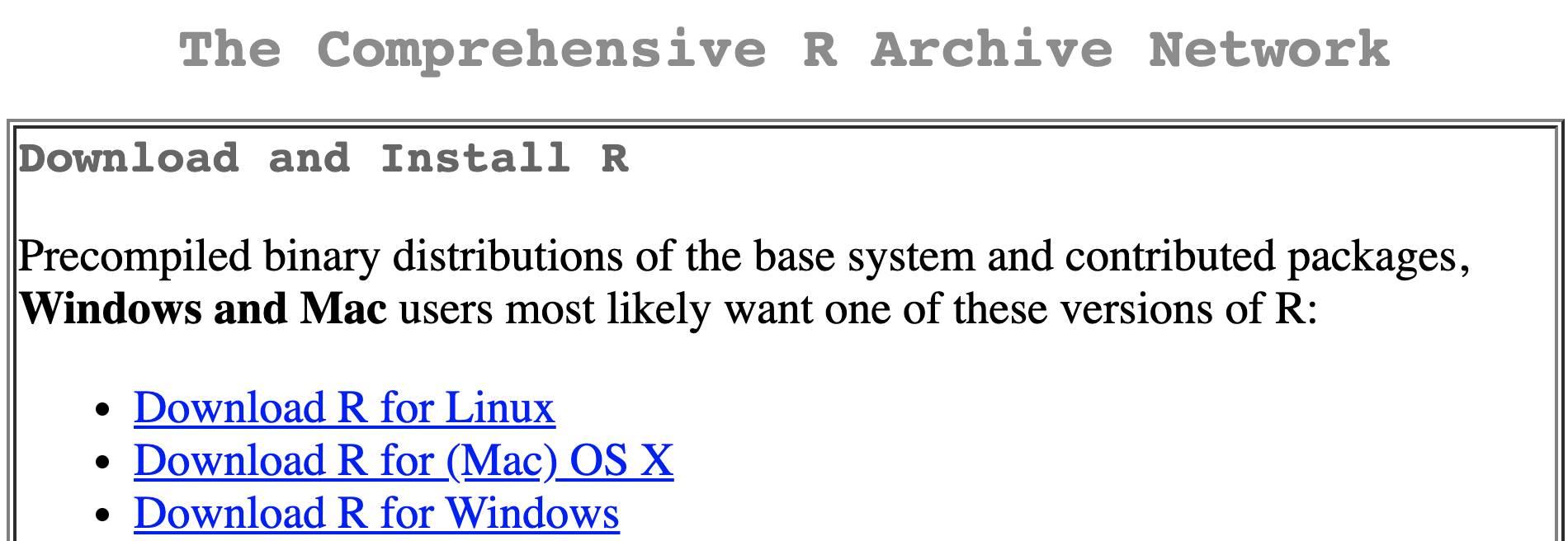
https://cran.r-project.org/, https://CRAN.R-project.org/package=installr
Run R
Command line. Type
Rand enter the R prompt- Type
R CMDto see the list of available commands - Type
Rscriptto see how you can run R commands and scripts from the command line. E.g.,Rscript -e 'print("Hello, world!")'
- Type
R console, installs with R
Rcommander. GUI for better interactions with R
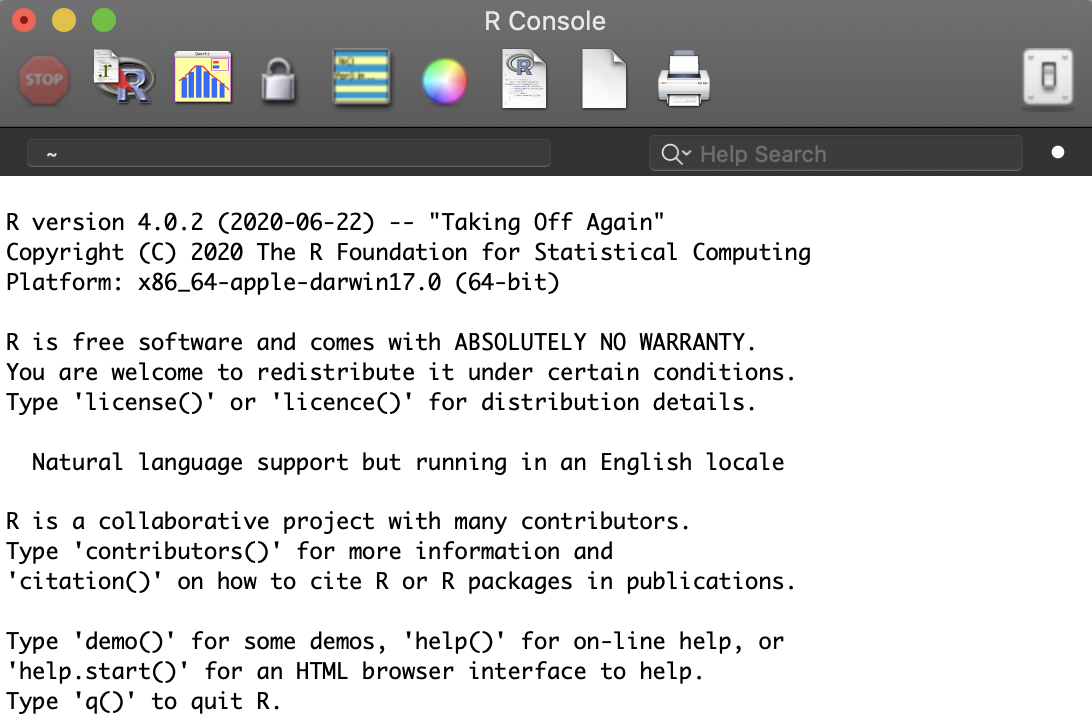
- RStudio. Integrated development environment for basic and advanced R operations
RStudio
RStudio is a program that allows you to run R in a more user-friendly environment
- RStudio offers some GUI (graphical user interface) features for R
RStudio is a very flexible IDE (Integrated development environment)
- The same R program is running underneath the interface
RStudio is open-source software (and therefore is free)
- Available for download at: http://rstudio.com
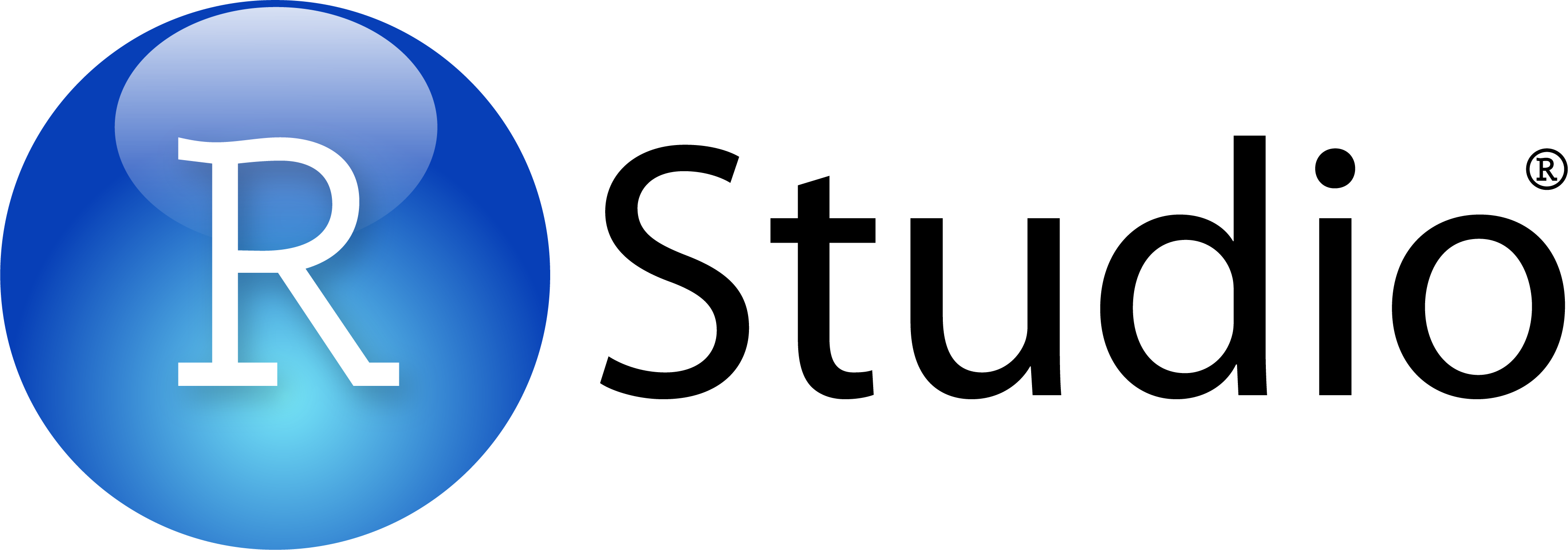
Why RStudio
Project-centric work - scripts and data are organized in one folder (project), easily accessible
Single workspace with four (rearrangeable, zoomable) panels
Work on multiple projects simultaneously in several instances of RStudio
Work on multiple (types of) scripts
See all variables in R environment, easily visualize them
Easy access to help, plots, packages
Simple integration with Git version control system
After you install R and RStudio, you only need to run RStudio
RStudio main window
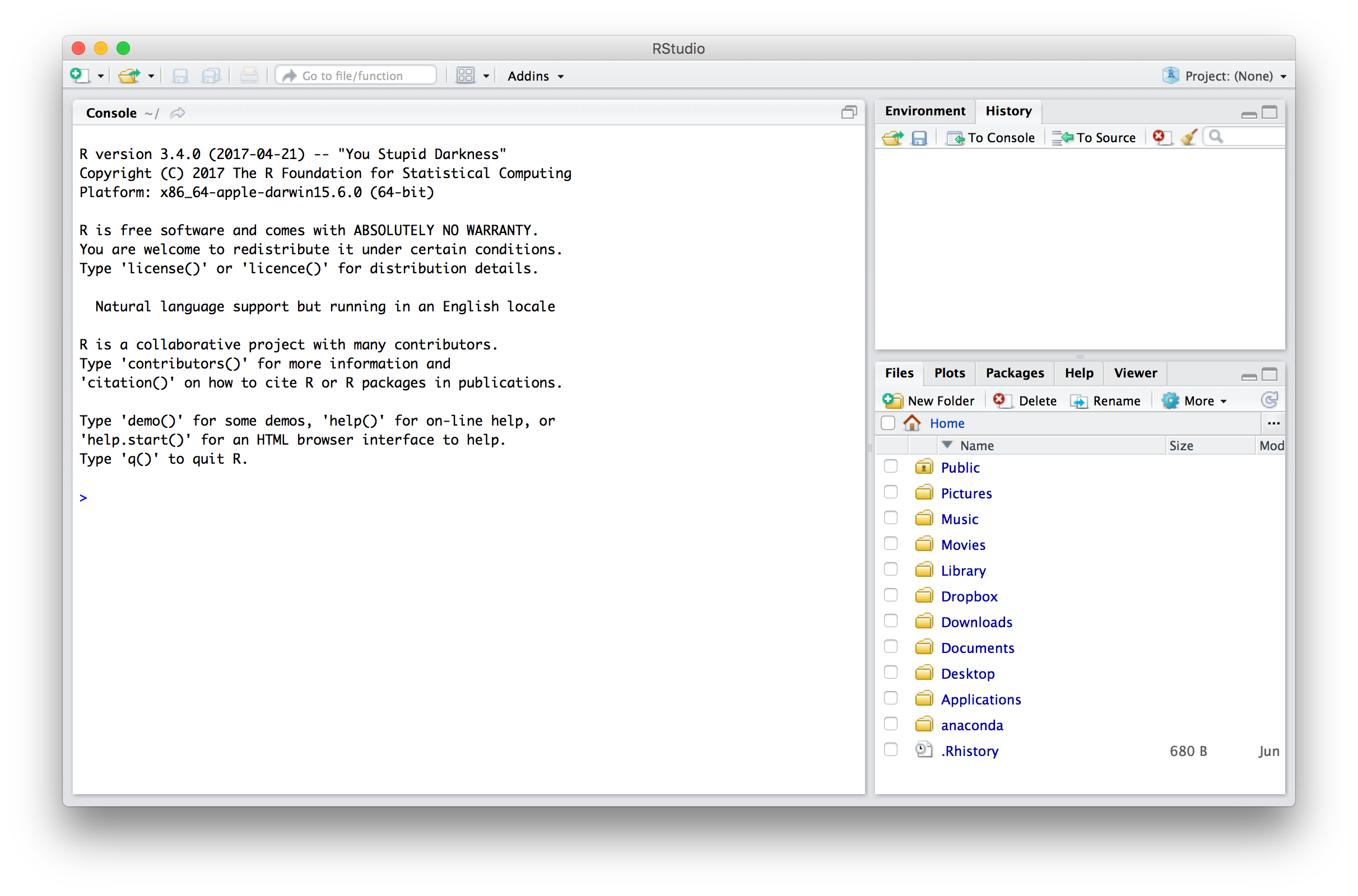
R Console
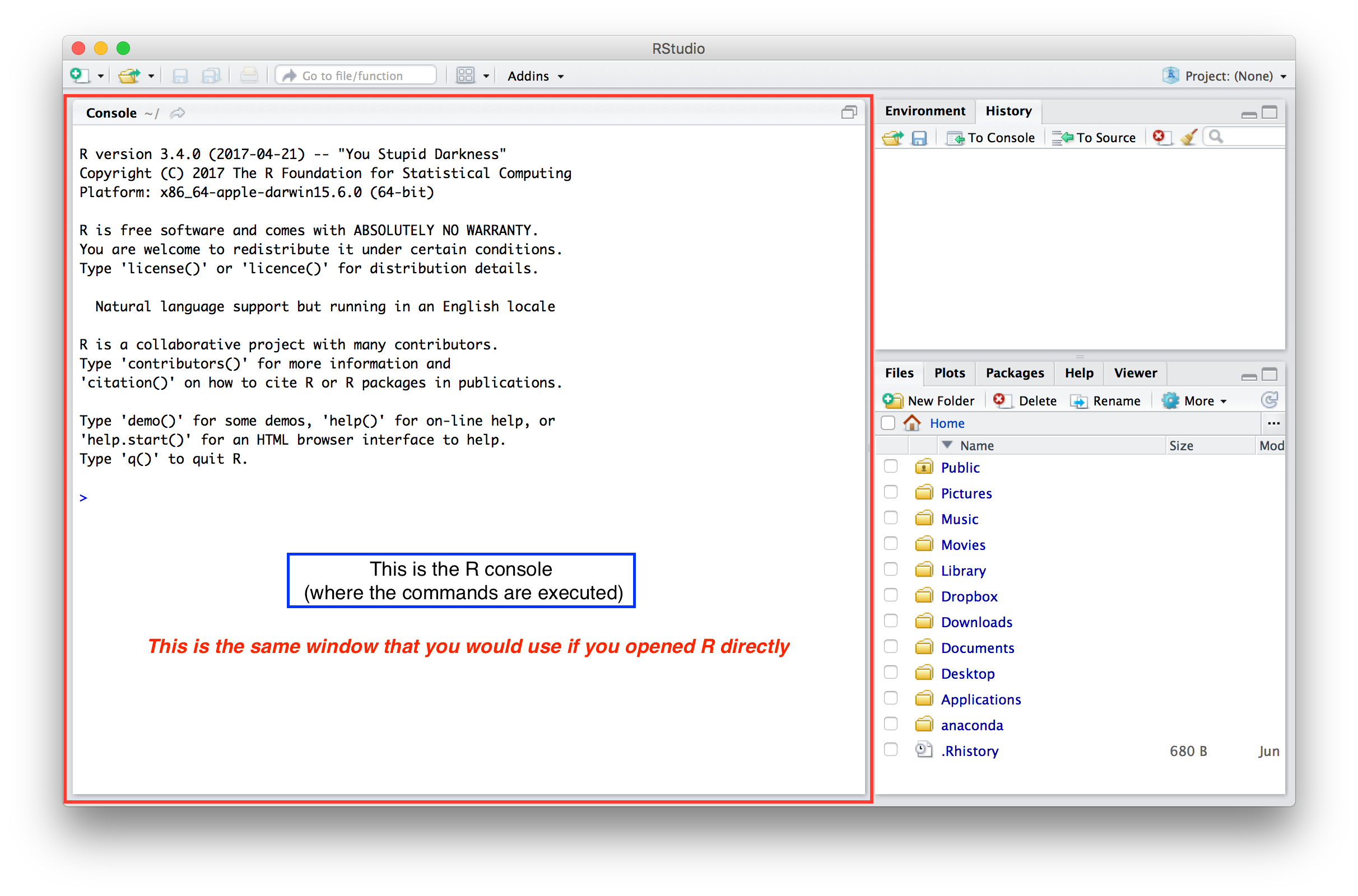
Create/open new script or other file
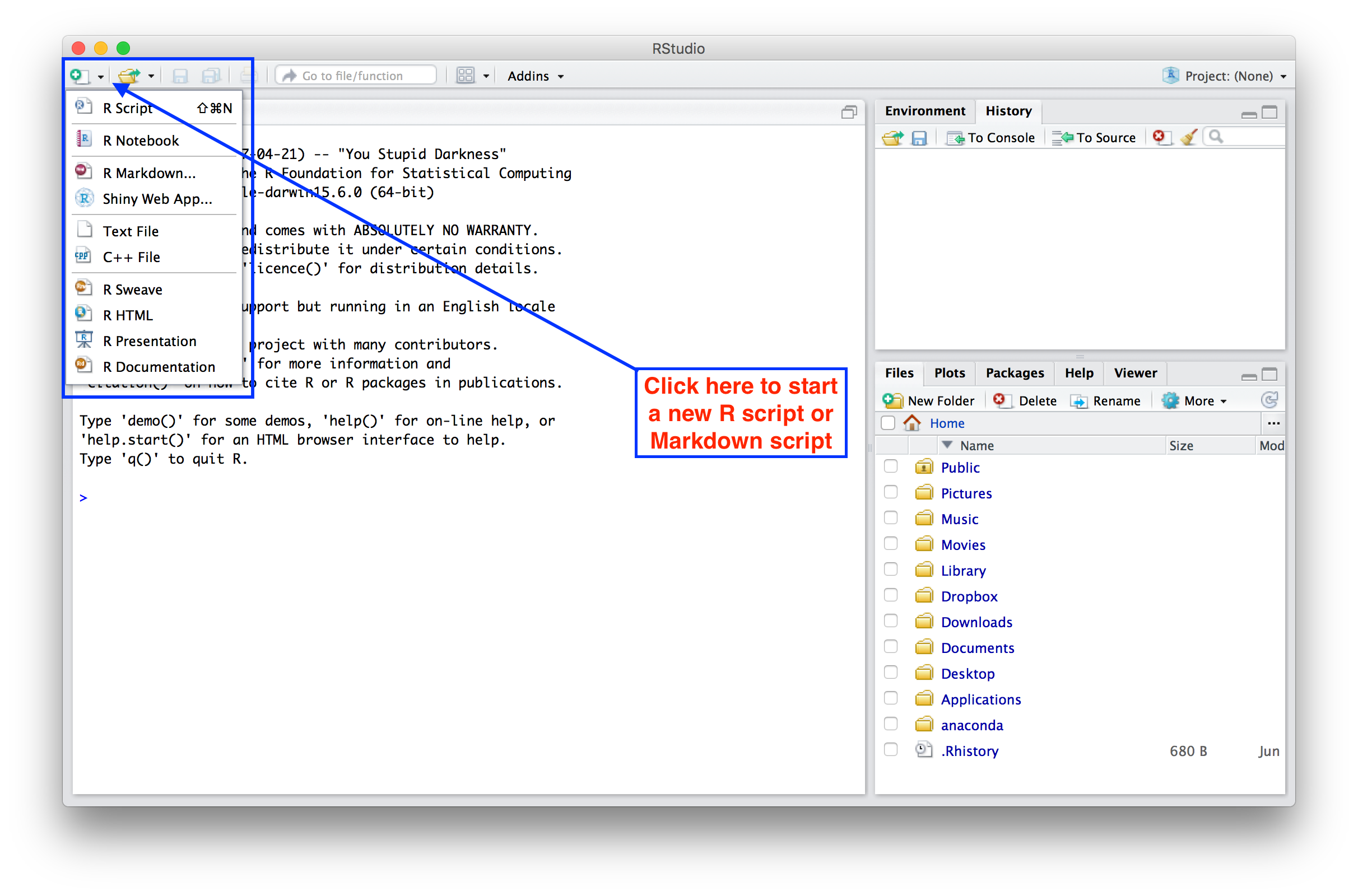
Open an existing script:
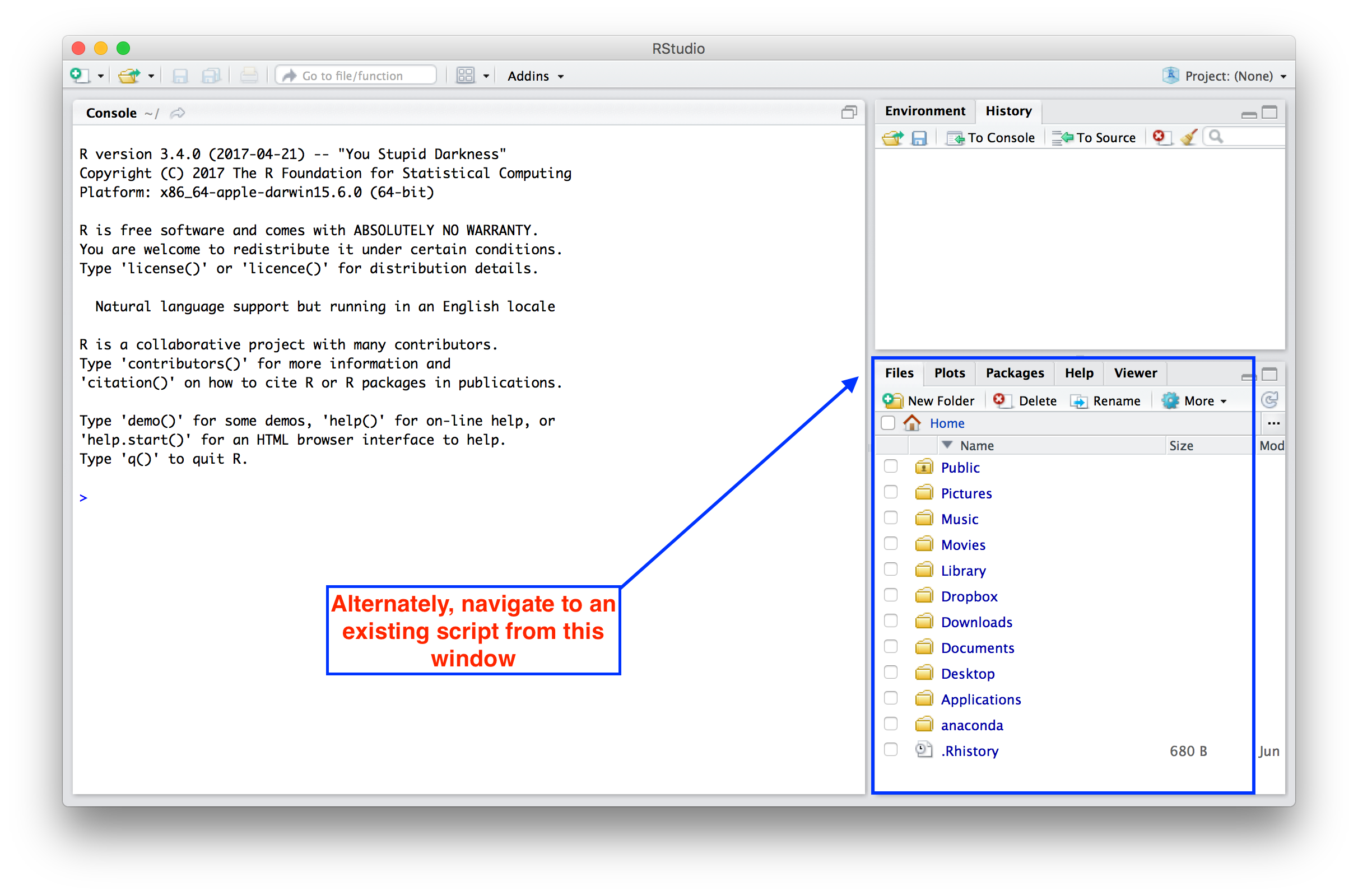
Rearrangeable tabbed interface
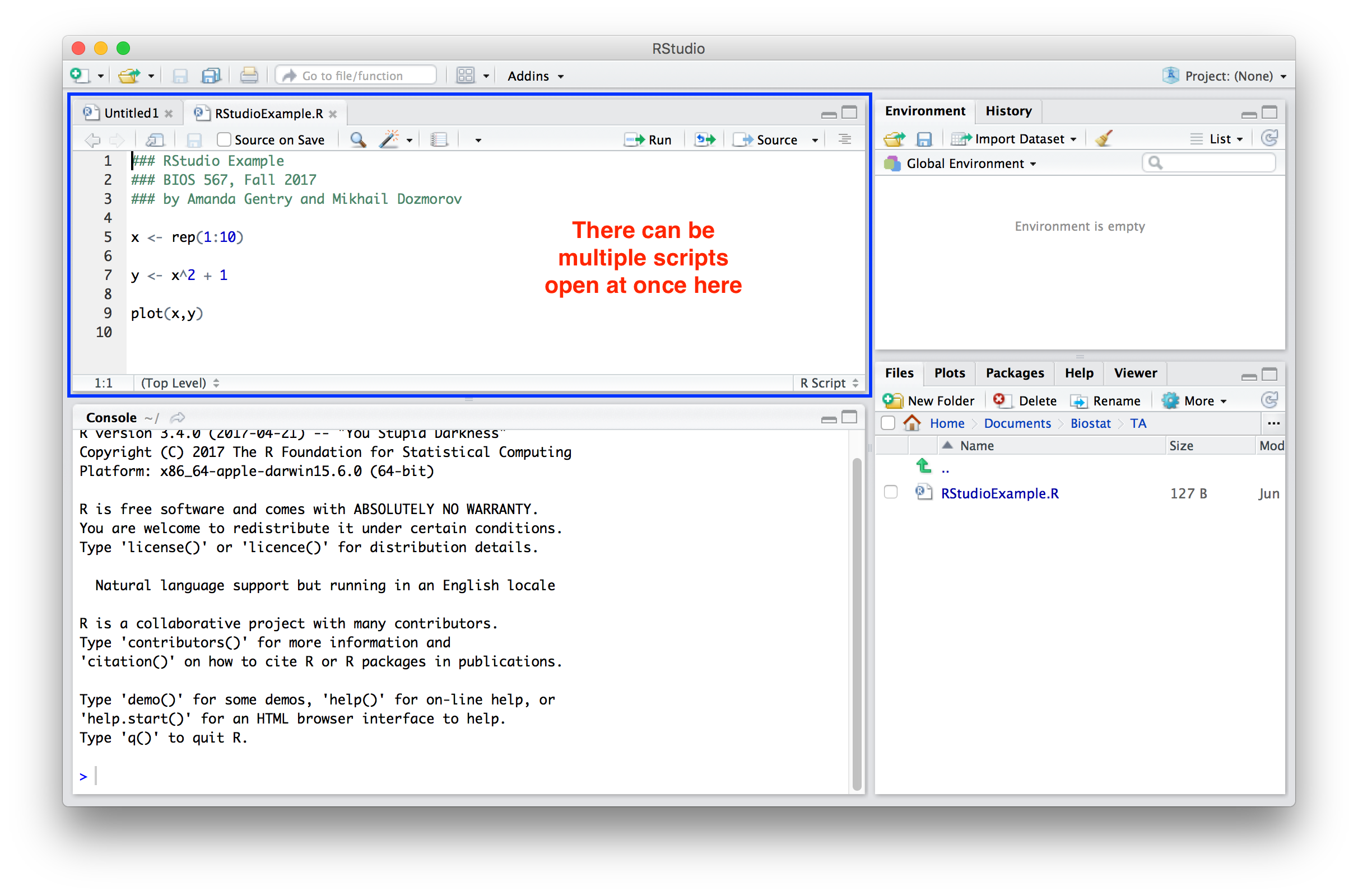
History of commands
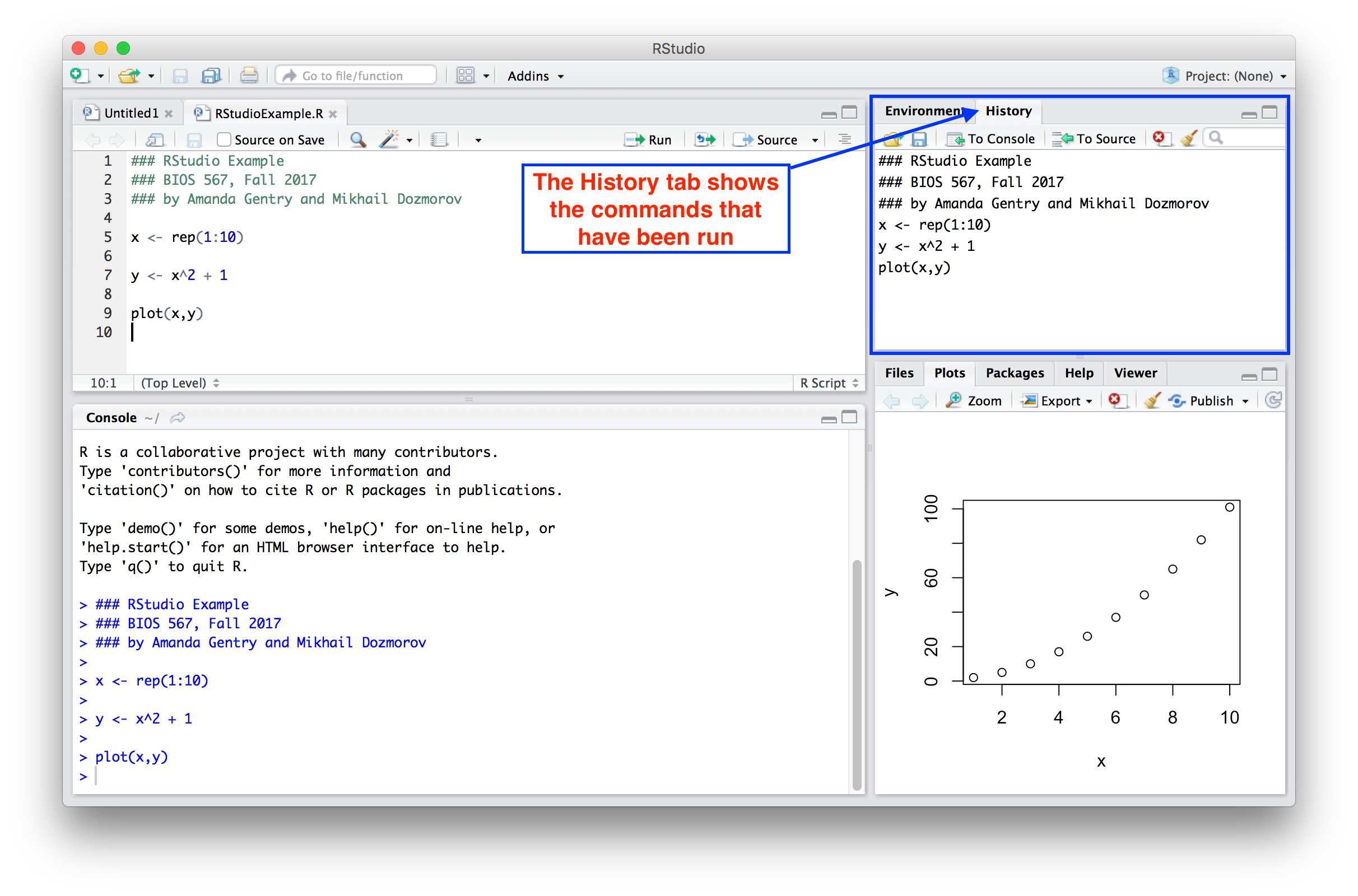
Environment tab
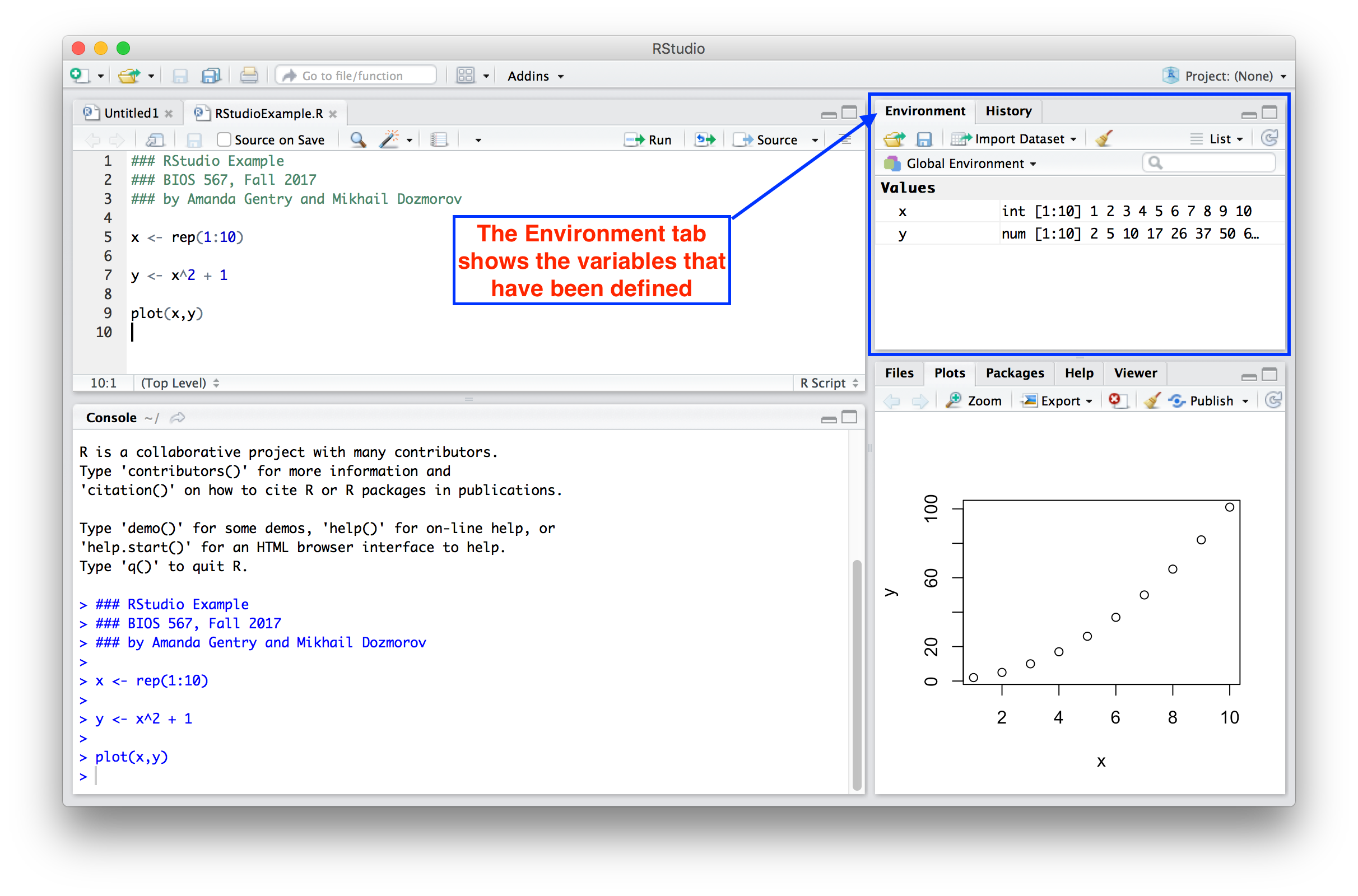
Plots tab
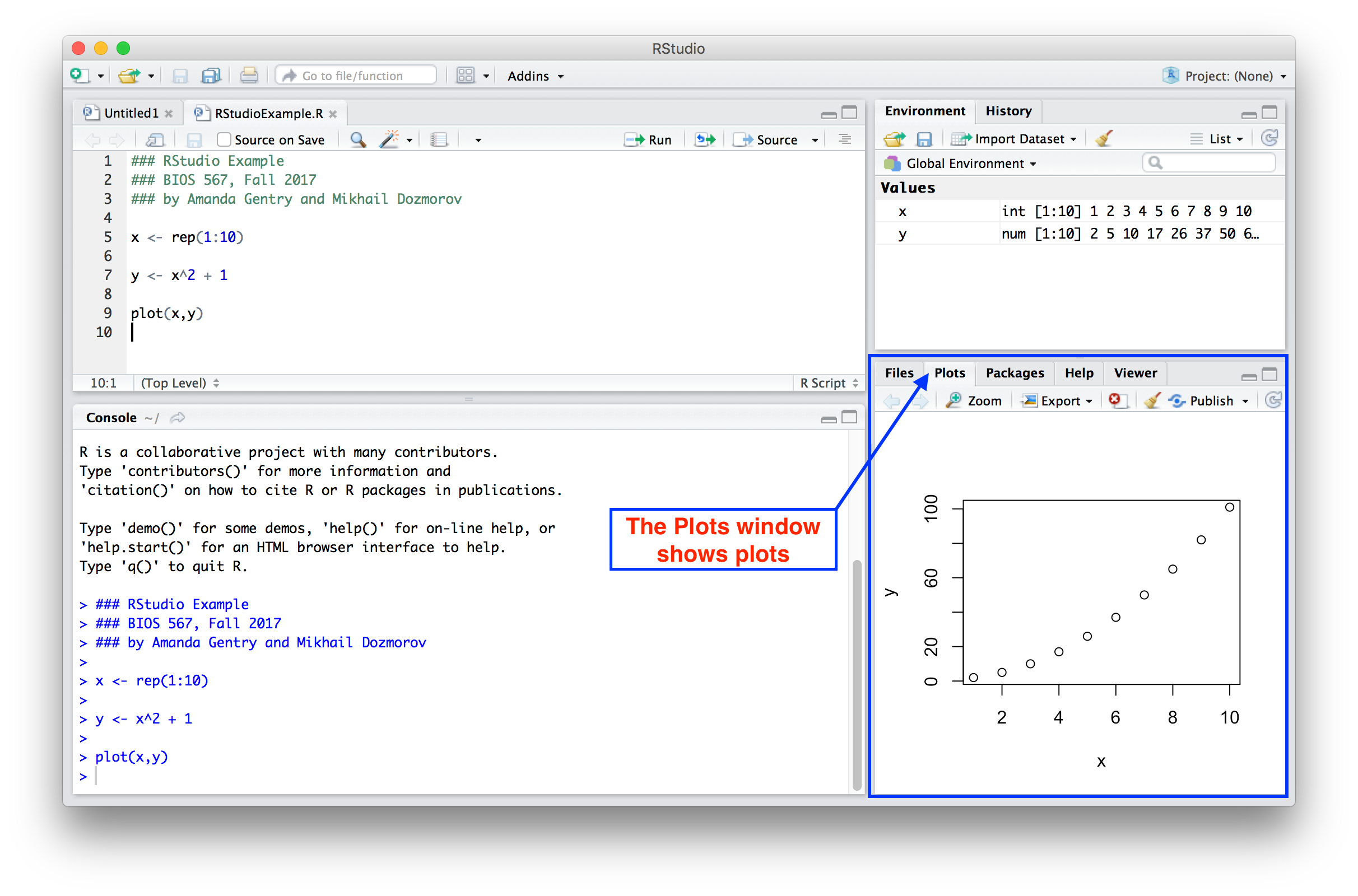
RStudio keyboard shortcuts
- Command (Ctrl) + Enter - Run current line/selection, go to the next line
- Alt + Enter - Run current line/selection, stay on the current line
- Ctrl + 1 - Move cursor to source
- Ctrl + 2 - Move cursor to console
- Ctrl + L - Clear console
- Ctrl + Alt + I - Create new code chunk
- Ctrl + Alt + c - Run current code chunk
- All the usual - Ctrl + Z, C, X, V, S, O
See more via menu "Help -> Keyboard Shortcuts Help", "Help -> Cheatsheets"
https://support.rstudio.com/hc/en-us/articles/200711853-Keyboard-Shortcuts
RStudio is more than IDE
RStudio PBC develops many now-gold-standard R packages
tidyverse– R packages for data science, including ggplot2, dplyr, tidyr, and purrrshiny– An interactive web technologyrmarkdown– Insert R code into markdown documentsknitr– Dynamic reports combining R, TeX, Markdown & HTMLtensorflow- open-source software library for Machine Intelligencereticulate- provides a comprehensive set ofdevtools– Package development tool
RSstudio-inspired analogs
Rodeo - A Native Python IDE for Data Science
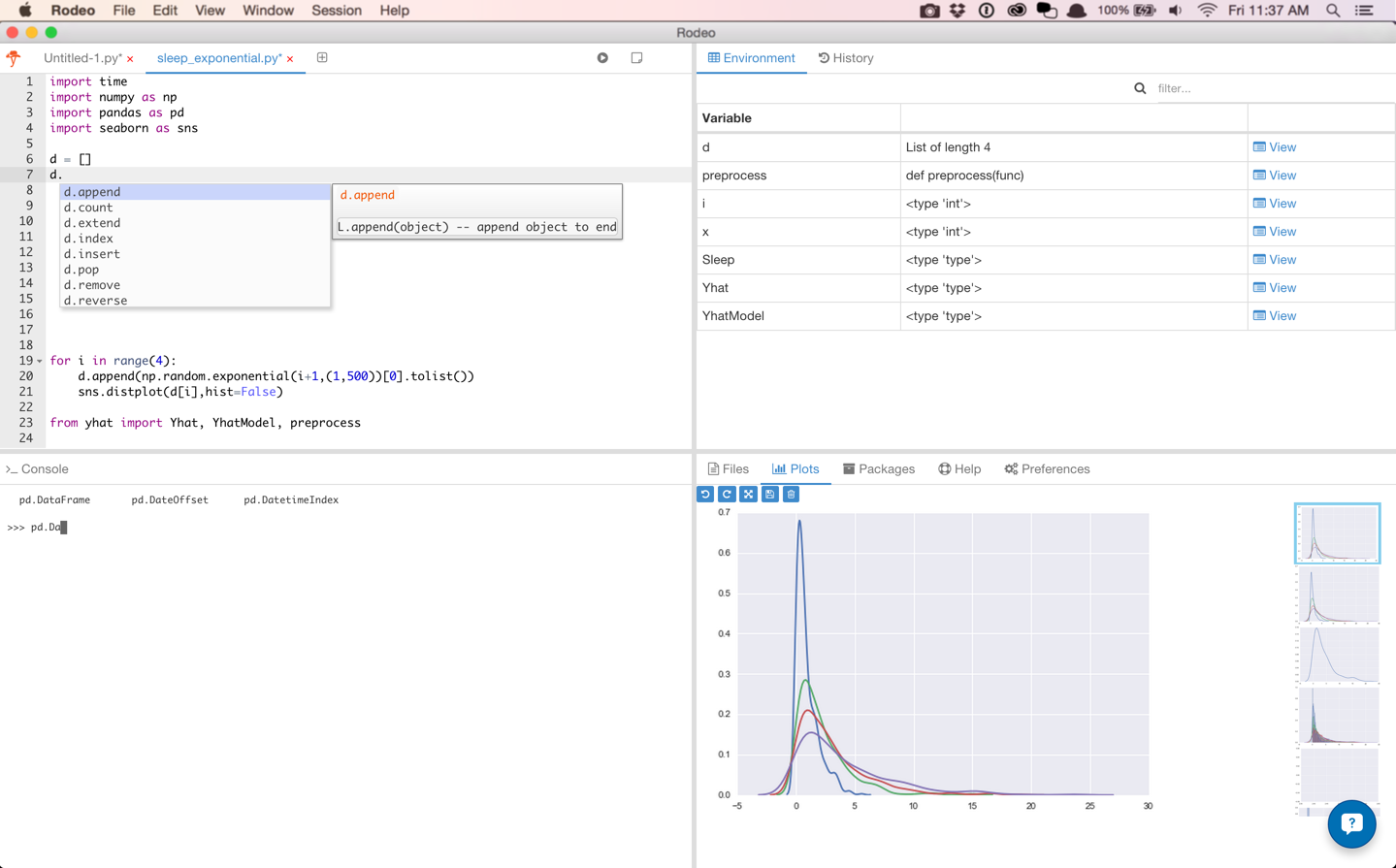
RStudio cloud
Getting started locally
- Install R
- Install RStudio
- Install packages (
rmarkdown,tidyverse) - Load packages
- Install Git ...
Getting started online
- Go to https://rstudio.cloud/
- Register or log-in with Google, GitHub (recommended) accounts
RStudio cloud

- An online, cloud-based instance of RStudio IDE, accessible via a web browser
- No hardware requirements or software setup requirements from the user's side
- Share projects with specific people or anyone
- Import projects from GitHub
- Free plan is always available (up to 15 projects, 1 shared space, 15 project-hours per month, up to 1Gb RAM and 1 CPU per project)